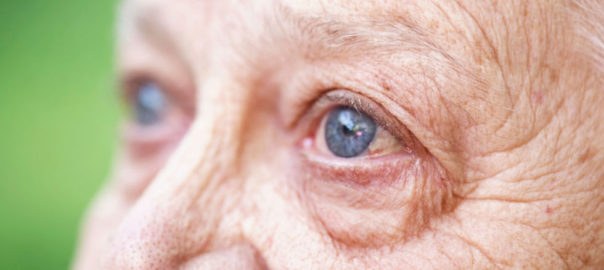Upcoming Clinical Trials Will Test the Potential of Stem Cells to Treat Macular Degeneration

Two clinical trials are expected to start soon to assess the ability of stem cells to treat macular degeneration, a leading cause of blindness in people over 50 years old. One trial uses cells derived from human embryonic stem cells, while the other uses induced pluripotent stem cells (1).
Macular Degeneration
Age-related macular degeneration is characterized by the loss of retinal pigment epithelial (RPE) cells, which support the rods and cones in the eye. The loss of RPE cells leads to the loss of the photoreceptors, causing blindness. There are numerous factors that contribute to RPE cell death, including age, smoking, and high blood pressure, and this disease affects about 11 million people in the United States.
The eye itself is a strong candidate for cell therapy, as the eye is “immunoprivileged.” Whereas foreign cells in other parts of the body can be recognized and attacked by the immune system, the eye is protected from this response. Thus, injecting cells into the eye, such as new RPE cells, would be protected from rejection or the need for immune matching.
The Clinical Trials
The two trials differ in how cells are obtained but are otherwise extremely similar in concept and goals. The first trial, out of California, will create RPE cells from human embryonic stem cells. This phase II trial will assess the safety and efficacy of injecting RPE cells into patients’ eyes. This work is preceded by a small trial demonstrating the safe transplantation of human embryonic stem cell-derived RPE cells into 9 patients.
Likewise, a team from the National Eye Institute will be injecting RPE cells derived from patients cells. This trial utilizes induced pluripotent stem cell technologies to dedifferentiate cells into stem cells and subsequently create RPE cells from the patient. Both trials will transplant the cells using a scaffold, rather than a liquid suspension, to maintain a single layer of cells. Whether the scaffold technology is superior to the simpler injection protocol is still up for debate, though two patients who have received scaffold injections of RPE cells from human embryonic stem cells did not experience serious side effects and had an increase in vision (2).
Previous Studies
The transplantation of lab-derived RPE cells have been studied for over a decade, with promising results in animal models. These models have shown the ability of RPE cells to integrate with existing rods and cones. Importantly, injections of induced pluripotent stem cell-derived RPE cells did not show issues with mutations or teratoma formation, concerns in the field.
Future Studies
Transplanting RPE cells will provide the surviving rods and cones in the eye with the support they need to function properly. However, this therapy will not replace the photoreceptors that have already died. To that end, the National Eye Institute is also developing a therapy that includes an RPE patch and photoreceptors (1). If successful, this treatment would not only preserve eyesight in patients, but also restore lost sight.
References
1. https://www.statnews.com/2019/01/16/stem-cell-therapies-macular-degeneration/
2. https://www.nature.com/articles/nbt.4114


